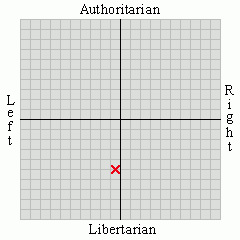The theory of the responsibility of a commander for the illegal or unethical behavior of those of under his command goes back a ways. Sun Tsu, in his 6th century tome, The Art of War, declared it a commander’s responsibility to make certain those under his command behaved civilly, even in armed conflict.
In 1474, in what may be the earliest war crimes trial, Sir Peter von Hagenbach literally lost his head after a Roman court deemed him guilty of failing to prevent atrocities committed by his army in the occupation of Breisach. Hagenbach claimed immunity with what has more recently been called, the Nuremberg defense. “I was only following orders.” Even by 15th century law that didn’t keep his head from ending up in a basket.
The principle of Command Responsibility has been bantered about a good bit over the years, and the goal posts seem to move depending on whether the person under indictment is on your side or the other. Take for instance the Nuremberg trials, in which 22 Nazi leaders were convicted of war crimes. The defense of “I was only following orders” didn’t fly, and just like Hagenbach, all 22 were convicted.
In another part of the world at about the same time, Japanese General Tomoyuki Yamashita was on trial for atrocities committed by his subordinates in the waning days of Japan’s occupation of the Philippines. The outcome mirrored Nuremberg and would set a standard followed for decades.
The Yamashita Standard
General Yamashita was represented by American lawyer and Army colonel, Harry E. Clarke. Clarke's defense asserted that “the Accused is not charged with having done something or having failed to do something, but solely with having been something….American jurisprudence recognizes no such principle so far as its own military personnel are concerned….No one would even suggest that the Commanding General of an American occupational force becomes a criminal every time an American soldier violates the law…one man is not held to answer for the crime of another.”
Clarke's impassioned defense made no difference in the outcome. Yamashita was convicted by the American military tribunal and sentenced to death. Appeals were rejected by first the Philippines Supreme Court, then later by SCOTUS. Yamashita was executed early the following year.
The responsibility of a commander for the actions of his troops was set in stone. Or so it seemed, until Viet Nam.
The Medina Standard
In 1968, the Court Martial of U.S. Army Captain Ernest Medina would set a new standard by which Command Responsibility would be judged. Medina was commanding officer of Charlie Company, 1st Battalion, 20th Infantry, 11th Brigade of the American Division. This is the unit responsible for the infamous My Lai Massacre. Depending on which body count one believes, American soldiers killed anywhere from 200 to more than 500 old men, women and children that day; and not a single fighting age male.
Although there were 26 military personnel originally charged with the atrocities at My Lai, only one; Lt. William Calley, was ever convicted. Calley is the only one of the 26 to confess full responsibility for what happened, to truthfully tell the tale, and for that he was sentenced by a Court Martial to life in prison (later reduced to four years). Although Calley admitted his actions, he excused them with the Nuremberg Defense. He was only following orders. The Court Martial applied the Yamashita Standard and disregarded that defense.
The orders, according to Calley and many of the men in his squad, came from Cpt. Ernest Medina. Due to these allegations, Medina became one of the 26 charged, and was placed on trial for the events of that day. In his testimony, Calley claimed he had been directly ordered, by Medina, to “kill everyone in the village.” Medina denied that.
The day before My Lai, Charley Company stumbled into a booby trap that killed one of the units more popular soldiers. Cpt. Medina came before Charlie Company that night following a wake for the dead soldier and gave them a pep talk to pump them up for the morrow’s mission. Medina later claimed he never said anything about killing women and children, but many of those present that night believe he said just what Calley remembered; that they should kill any and every “gook” they encountered. Payback for the loss of a comrade.
When all of this finally came to trial, Medina would face charges of responsibility for the murder of 102 Vietnamese civilians. The indictment was based on the Yamashita Standard of Command Responsibility. i.e., if Medina was in charge of Charley Company, he should be accountable for the actions of Charlie Company. Famed defense attorney F. Lee Bailey defended Medina, and managed to get key evidence suppressed and beat the charges. The acquittal was upheld on appeal. A new standard was set for Command Responsibility. [It was only after the statute of limitations had expired that Medina admitted he had lied and suppressed evidence that would have convicted him.]
The Chrystal Ball
Briefly, the Medina Standard is “the direct proving by prosecutors in court of an officer, or officers, directly ordering soldiers under their command to do something that they know is illegal."
So, under current standards, if the U.S. Justice Department and A.G. Eric Holder cannot prove a direct link between the orders issued from the Bush/Cheeny White House with the actions of CIA torturers, Abu Ghraib abusers, and Hiditha murderers… those ordering such atrocities will skate while those in the field will go down in flames.
Perhaps this will explain why the Obama administration has been so reluctant to waste time chasing tails.
~~
1 hour ago








3 Comments:
An excellent post, with lots of stuff that I either didn't know or was unclear on. Thanks; I'll be passing this on in a post tomorrow.
As a small parenthetical, the prosecution of a military member in the military justice system is a court martial, not a court marshall.
Thank you. Mispelling corrected.
Post a Comment